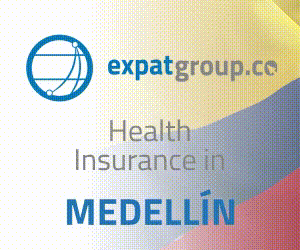Bogotá Expected To Continue In Good Financial Shape, Says Fitch
Fitch Ratings has affirmed Bogota Capital District of Colombia’s (the district) ratings as follows:
- Long-Term Foreign-Currency Issuer Default Ratings (IDR) at ‘BBB-‘; the Rating Outlook is Negative.
- Long-Term Local-Currency IDR at ‘BBB-‘; the Rating Outlook is Negative.
- $300 million USD equivalent, 9.75% Colombian Peso-denominated notes due 2028 at ‘BBB-‘.
- National Long-Term Rating at ‘AAA(col)’; the Rating Outlook is Stable.
- National Short-Term Rating at ‘F1+(col)’.
- 2 trillion COP Bond Issuance Program at ‘AAA(col)’.
The affirmation reflects Fitch’s unchanged expectations that Bogota will maintain a strong operating performance and manageable debt levels. In Fitch’s view, the district is well positioned to overcome the current global and national adverse economic scenario. Despite a significant increase in debt to cover its Development Plan, payback ratio is expected to be below 5x in the next five years, while the actual debt service coverage (ADSCR) ratio is projected to range between 2x and 4x, in line with our previous review. Bogota’s ratings reflect the combination of a ‘Midrange’ risk profile and a ‘aa’ debt sustainability under Fitch’s rating case scenario. The district’s stand-alone credit profile (SCP) is ‘a’. The IDR is capped by Colombia’s sovereign rating of ‘BBB-‘/Negative, reflecting Fitch’s view that a subnational in Colombia cannot be rated above the sovereign.
While Bogota’s most recently available data may not have indicated performance impairment, material changes in the government’s debt, revenue and expenditures are occurring across the sector and likely to worsen in the coming weeks and months as economic activity suffers and government restrictions are maintained or broadened. Fitch’s ratings are forward-looking in nature, and the firm will monitor developments in the sector for their severity and duration and incorporate revised base- and rating-case qualitative and quantitative inputs based on performance expectations and assessment of key risks.
KEY RATING DRIVERS
Risk Profile: ‘Midrange’
Fitch has assessed Bogota’s risk profile at ‘Midrange’, reflecting ‘Midrange’ attributes on the six key risk factors of the three main risk pillars: revenues, expenditures and debt and liquidity.
Revenue Robustness: ‘Midrange’.
Bogota’s operating revenue is mostly made up of predictable and growing tax items (notably property tax and tax on industry and commerce) and stable transfers from the Colombian state (BBB-/Negative). Tax revenue reported a nominal compound annual growth rate (CAGR) of 7.8% in the past five years, above the nominal GDP growth of 6.8% in the same period. The tax on industry and commerce (ICA, its Spanish acronym) reported the highest contribution to tax revenue in 2019 (45.2%) and is closely linked to the economic cycle. Fitch foresees a slower growth pace on the District’s operating revenues in 2020 and 2021, due to the effect of the coronavirus contingency, but also considers recovery prospects afterwards, due to Bogota’s economic strength.
On the other hand, national transfers come from a sovereign counterparty rated at ‘BBB-‘/Negative. Fitch considers that transfers framework and its evolution are stable and predictable. However, the fiscal pressures national government faces may lead to stagnation or even a reduction of transfers and could worsen in the current scenario of economic downturn caused by the coronavirus lockdown. Nonetheless, the district’s operating revenue structure presents a low dependence on transfers, so the exposure to this risk is lower for Bogota than for municipalities with lower fiscal autonomy.
Revenue Adjustability: ‘Midrange’
Given the relatively high proportion of local collection on total revenues, Bogota’s ability to cover a reasonably expected revenue decline is estimated to be above 50%. Bogota has tax rates that are way below the legal limit and can set the rates for most of its taxes under the limits established by National Law. The affordability of additional taxation is moderate, considering the width and diversification of industrial and commercial tax base as well as the proportion of median household disposable income that additional local taxes may represent. However, the district has decided not to introduce new taxes or to increase tax rates during the current coronavirus crisis to keep the budget balanced. Some spending cuts will be implemented instead.
Expenditure Sustainability: ‘Midrange’
Bogota exercised tight control over operating expenditure growth in recent years and aims to comply with the prudential rules set in Law 617 of 2000, which caps some administrative expenditure to a proportion of unrestricted revenue. Operating expenditure showed a CAGR of 4.4% from 2015 to 2019, way below the operating revenue CAGR of 7.8% in the same period. Bogota’s main responsibilities are the provision of basic services such as education (payroll of both teachers and administrative personnel), healthcare (insurance and subsidies to low-income people), water supply, sanitation and transport. Although the nature of operating expenditure is not generally countercyclical, the district is considering an increase in social benefits and in transfers to the transport and health systems to address the coronavirus contingency. Decree 683 eases the use of some earmarked revenues as a financing mechanism for extraordinary operating expenditure related to the coronavirus contingency, which may mitigate pressure on the operating balance. Spending is expected to be pressured for 2020 and 2021, but with a forecasted stabilization trend in the medium term given the effectiveness of prudential rules over administrative expenditure.
Expenditure Adjustability: ‘Midrange’
Bogota’s expenditure structure is relatively flexible despite the limited ability to cut some health and education earmarked transfers as the policies are decided at the national level. The district has also assumed Future Budget Allocations (FBA, authorizations against tax revenues in future budgets for paying certain expenses) for up to COP9.8 trillion, of which COP6.7 trillion corresponds to the public transport system, which add some inflexibility to the expenditure structure. However, Bogota reports relatively strong operating metrics, which denotes a moderate margin to cut expenditure. In particular, operating margin (operating balance to operating revenue) averaged 21.4% and capital expenditure represented 35.4% of total expenditure in the past five years (26.7% and 42.9% in 2019, respectively). The current administration is planning to carry temporary deficits, driven by an increase in capital expenditure and debt, as a countercyclical measure to boost the local economy amid the coronavirus pandemic.
Liabilities and Liquidity Robustness: ‘Midrange’
Bogota operates under a moderate national and individual debt management framework. Although the local framework imposes debt limits, rules and restrictions on some debt instruments, some loopholes exist for treating off-balance sheet risks, since prudential limits only consider the direct debt of local and regional governments (LRGs). As a response to the coronavirus pandemic, decree No. 678 eased the solvency (interest payment to operating balance) and sustainability (outstanding debt to current income) limits during 2020 and 2021. However, the district will continue to consider the ordinary prudential limits of 40% and 80%, respectively, reflecting orthodoxy in the debt plans.
As of December 2019, consolidated debt totaled $2.5 trillion COP, most of which was at fixed rate (78.9%) and in local currency (83.9%). The main risks in relation to the debt portfolio, such as foreign exchange exposure, variable interest rates and liquidity levels, are subject to continuous monitoring and are under the guidelines established by the district. Bogota manages natural hedges through management of its treasury. Despite the district reporting a high proportion of bullet debt, the several bonds that comprise the bullet debt have been placed at different maturities, so there is no maturity concentration. Bogota issued approximately COP1.2 trillion in inflation-linked bonds in 2019 and 2020, but Fitch foresees a limited risk of their principal value increasing abruptly given Colombia’s track record of controlled inflation.
Bogota’s current debt plans amounts to COP10.9 trillion in the next 10 years. Issuance of internal bonds will be used as the main source of financing as the district plans to become a recurring and well-known issuer in the local market, along with some loans from multilateral and local banks. Fitch will monitor the use of debt. Despite expectations that leverage will increase in coming years, it is expected to be kept consistent with Bogota’s rating level given its financial soundness and strong liquidity.
Liabilities and Liquidity Flexibility: ‘Midrange’
The Colombian framework provides no emergency liquidity support from upper tiers of government. Bogota, like all Colombian LRGs, may borrow short-term debt for up to one-twelfth of its current revenue and must repay these loans before the end of the fiscal year. Decree 678 of 2020 allows territorial entities to contract short-term debt in 2020 and 2021, whose purpose is exclusively to attend temporary cash shortages in both operating and capital expenses. These loans may not exceed 15% of the current revenue and must be paid before next fiscal year end and will not be considered in the calculations of the legal limits.
Despite all cash considered to be restricted, Bogota maintains very high liquidity in its investment portfolio and has demonstrated market access with local commercial banks, multilateral agencies and the local capital market. Bogota has usually had statutory approval of indebtedness by the city council in an amount that is above the city’s potential needs. These characteristics differentiate Bogota from most of its national peers, for whom this KRF is assessed as Weaker.
Debt Sustainability ‘aa’
Under Fitch’s ratings case, the payback ratio will remain sound over our five-year rating horizon, reaching 3.2x in 2024 from 0.7x in 2019. Actual debt service coverage ratio (ADSCR) is likely to weaken to about 2.10 from 20.3.x, while the synthetic DSCR weakens to 2.5x from 16.4x. The fiscal debt burden will increase to 57.2% from 17.5%. Applying an override due to the DSCR and the fiscal debt burden, resulting in an overall debt sustainability assessment of ‘aa’.
Consolidated debt significantly increased in 2019 to $2.5 trillion COP from $1.2 trillion COP due to the issuance of bonds in the local market for up to $1.4 trillion COP. This increase was already expected by Fitch in its previous review. In December 2019, Bogota took on debt of up to $140 million USD ($500 billion COP) with the IFC. In May 2020, the district issued bonds in the local market for up to $600 billion COP.
The current administration is planning to finance temporary capital expenditure-driven deficits with an increase in debt. According to Bogota’s estimates, during a 10-year horizon, the interest to operating balance ratio will remain below 10%, significantly lower than the maximum of 40% allowed. In turn, debt to current revenue could near the legal maximum of 80% in the next five years. The assumptions used by the district for these calculations are very conservative and, in reality, the debt should not be as close to the legal limit as estimated.
Fitch’s rating case considers additional debt for up to $7.8 trillion COP to be taken between 2020 and 2024, as well as the bullet payment of one five-year bond for up to $300 billion COP in 2024. The additional projected debt includes debt in foreign currency for around $566 million USD, as estimated by Fitch. Fitch also includes an estimated share of Empresa Metro de Bogota debt (22.2% of total debt) for up to $625.8 billion COP in 2024 as other Fitch classified debt.
Bogota, as the capital of Colombia, is the base of legislative and judicial institutions, as well as the nation’s most important companies. It is considered the most significant cultural, industrial and touristic center of Colombia. Bogota contributes 25% of Colombia’s GDP, which makes it the country’s most important economic center. The city has significant economic diversification, socioeconomic indicators higher than the national average and a favorable tax culture. Fitch classifies Bogota, as for all Colombian LRGs, as type B as it covers debt service from its cash flow on an annual basis.
DERIVATION SUMMARY
Bogota’s SCP is assessed at ‘a’, reflecting combination of a midrange risk profile and debt sustainability metrics assessed in the ‘aa’ category under Fitch’s rating case scenario. The SCP, positioned in the middle of the ‘a’ band, also reflects peer comparison. No other factor affects the ratings. Bogota’s IDRs are capped by Colombia’s IDRs.
KEY ASSUMPTIONS
Fitch’s rating case scenario is a “through-the-cycle” scenario, which incorporates a combination of revenue, cost and financial risk stresses. It is based on the 2015-2019 figures and 2020-2024 projected ratios. The key assumptions for the scenario include:
- Taxes and other operating revenues (fees, fines and others) growth rate in real terms is similar to the national GDP in the long term, considering a 15% drop in 2020, followed by a full recovery in 2022;
- 6% nominal growth of transfers, according to the national budget. From 2021, the growth is a four- year moving average of the nominal national GDP growth;
- Operating expenditure real growth of 3% in the long run, with a temporary real growth of 6% in 2020;
- Capital revenue drops annually by 20% considering a three-year moving average;
- Capex is adjusted according to the decrease in the operating margin, capital revenue and new borrowing with a five-year moving average floor;
- Debt level considers Bogota’s projections;
- Apparent cost of debt at 9%;
- All cash is considered restricted.
RATING SENSITIVITIES
Factors that could, individually or collectively, lead to positive rating action/upgrade:
- Bogota’s IDR is capped by the sovereign rating. A stabilization of the outlook would be possible only if the sovereign outlook is stabilized.
Factors that could, individually or collectively, lead to negative rating action/downgrade:
- Bogota’s IDR would be downgraded if the sovereign rating is downgraded as well. A downgrade may also be possible if the SCP is downgraded by five notches or more, which would result from a debt payback ratio exceeding 9 x (‘a’ score) along with a debt service coverage ratio below 1.5x (‘bbb’ score), under Fitch’s rating case and assuming no changes to the risk profile.
The bond’s ratings would move in tandem with Bogota’s IDR.
SUMMARY OF FINANCIAL ADJUSTMENTS
Cash surplus of previous years are subtracted from capital revenues. Also, some withdrawals from the pension funds are reclassified to pass through transfers from capital revenue. Previous years deficits are subtracted from expenditure. General adjustments when inconsistencies are identified between in financial statements provided by the issuer and those published.
Fitch’s historical financial statements for Bogota result from a cross-check between published budgetary statements and the issuer’s reports to Consolidador de Hacienda e Informacion Publica (CHIP) and, where appropriate, reclassify certain line items. These reclassifications have a minimal impact on ratios.
Fitch takes into account consolidated figures, which include Bogota’s public establishments. Fitch does not take into account the revenues and expenditures of Universidad Distrital for its analysis but considers Bogota’s transfers to the university as part of operating expenditure.
Bogota’s operating expenditure is a based on a Fitch estimate and includes items reported under ‘investment expenditure’ that are recurring in nature. These include staff and other operating costs of the education sector and subsidies for utilities, health insurance and transportation, among others.
RATING ACTIONS
| ENTITY/DEBT | RATING | PRIOR | ||
| Bogota, Distrito Capital | LT IDR | BBB- | Affirmed | BBB- |
| LC LT IDR | BBB- | Affirmed | BBB- | |
| Natl LT | AAA(col) | Affirmed | AAA(col) | |
| Natl ST | F1+(col) | Affirmed | F1+(col) | |
| senior unsecured | LT | BBB- | Affirmed | BBB- |
| senior unsecured | Natl LT | AAA(col) | Affirmed | AAA(col) |

























